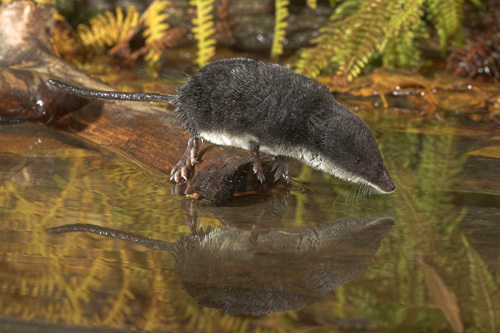Facts
Shrews (Blarina, Neomys, and Solenodon) are some of the only mammals still alive that are capable of secreting venom. Another animal is that venomous is Ornithorhynchus anatinus (the platypus).
Under experimental conditions Blarina toxin was injected
intravenously into animals in order to observe the effects of the
toxin. Not long after the venom was injected, the animals
depression, abnormal breathing, paralysis of their limbs, seizures,
and even death.
Once the Eurasian water shrews has returned to land, they go into their burrow and return momentarily and mostly dry.
